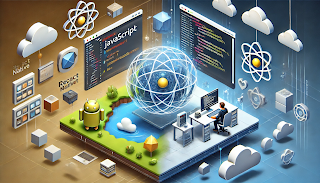fig.01 Rise of Remote Working
With the emergence of remote work in recent years, the
landscape of the modern workplace has undergone a profound upheaval. Remote
work has grown in popularity among both individuals and companies thanks to
technological advancements and a growing focus on work-life balance. We will
examine the benefits and difficulties of working remotely in this blog,
highlighting both the positives and potential problems of this emerging work
arrangement.
Advantages for Employees:
Flexibility and Work-Life Balance: Employees who work remotely can plan their workdays around their personal schedules. Employees can spend more time with family, pursue hobbies, and maintain a healthier work-life balance by doing away with the daily drive and sticking to a more flexible schedule.
Increased Productivity: For many people, the
familiarity and comfort of home can increase productivity. Because they may
customize their workspace to promote focus and efficiency, remote workers
frequently encounter less distractions, which results in higher levels of
productivity.
Cost Savings: Employees that work remotely
often experience significant cost reductions. Employees may be able to deploy
resources more wisely if their personal finances are favourably impacted by
reduced transit costs, fewer meals connected to work, and decreased wardrobe
costs.
Access to a Global Job Market: Geographical
constraints are removed by remote work, offering employees access to a wide
variety of career options from businesses all around the world. Employees are
now able to look for jobs that fit their talents and passions more closely
because to the increased talent pool.
Health and Wellbeing:
Remote employment can result in better health outcomes.
Employees may feel lower levels of stress and a lower chance of contracting
illnesses frequently found in offices. Additionally, remote employment makes it
simpler for people with impairments or health issues to work.
Advantages for Employers:
Talent Acquisition and Retention: Offering
remote work choices can be a potent recruitment and retention tool for top
personnel. Companies that accept remote employment possibilities are no longer
limited to hiring from a small local talent pool, allowing them to hire the
most qualified people wherever they may be.
Cost Savings: Employers can cut back on
overhead expenses like rent, utilities, and office supplies that come with
operating physical offices. Making the switch to remote work can result in
significant cost savings that can be put toward training new hires and other
business initiatives.
Increased Productivity and Engagement:
According to research, remote employees frequently have better levels of
engagement and job satisfaction. Because they feel their company has faith in
them, employees have higher morale and are more motivated, which increases
productivity as a whole.
Business Continuity: Research has shown that
remote workers usually exhibit higher levels of engagement and job
satisfaction. Employee morale and motivation are higher because they believe
their firm has faith in them, which boosts overall productivity.
Sustainability and Corporate Social Responsibility:
By lowering the carbon emissions linked to everyday
commuting and office activities, remote work helps to create a more sustainable
business model. Employers can show their dedication to environmental
responsibility in order to draw in environmentally conscientious clients and
workers.
Challenges for Employees:
Isolation and Loneliness: Particularly for
people used to social connections in a regular office setting, working from
home might cause feelings of isolation. Lack of face-to-face interaction may
cause a person to feel alone and disconnected from the group.
Work-Life Balance Boundaries:
Remote work may cause a blending of personal and
professional lives if there are no defined boundaries. It may be difficult for
employees to "switch off" from work, which could result in burnout
and a reduction in general wellness.
Distractions in domestic settings might reduce productivity.
Family members, domestic duties, and other unrelated activities might make it
difficult for an individual to concentrate on their work.
Challenges for Employers:

fig.05 Challenges faced by employers
Monitoring and Communication:
Supervising remote employees and ensuring effective communication
can be challenging. Employers must adopt suitable communication tools and
techniques to maintain seamless collaboration among team members.
Trust and Accountability:
The ability to work remotely strongly depends on employee
and employer trust. Without standard office monitoring tools, employers could
find it challenging to assess the productivity of remote employees,
necessitating a transition to outcome-based performance evaluation.
Cybersecurity Concerns:
As confidential company information is accessed from
numerous locations outside the protected office network, remote work creates
new cybersecurity vulnerabilities. Employers need to have strong security
measures in place to guard against possible data breaches.
Conclusion
The emergence of remote work has completely changed the
nature of the modern workplace, presenting both advantages and difficulties for
both businesses and individuals. Accepting remote labor can increase
flexibility, boost output, and reduce costs. However, it also necessitates
resolving issues with accountability, communication, and maintaining a healthy
work-life balance. It's essential to strike a balance between these advantages
and disadvantages if you want to fully realize the benefits of remote work and
build a viable, productive workplace for the future.
Written by - Vaishnavi Soni








No comments:
Post a Comment